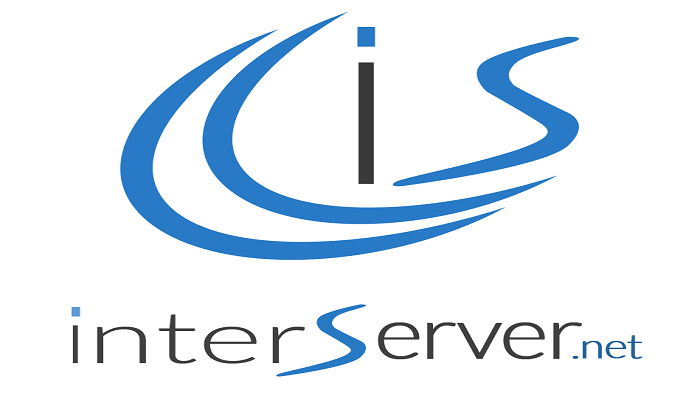Beginner’s Guide: How to Start a Blog
“Quick Overview” A blog, short for “weblog,” is a platform where individuals or organizations can share their thoughts, experiences, and expertise on a particular topic or niche. In recent years, blogs have become an increasingly popular way for people to express themselves and share their passions with the world.
Starting a blog can be a great way to connect with like-minded individuals, establish yourself as an expert in your field, and even earn money through advertising and sponsorships. With the rise of online communication and the need for digital content, starting a blog has become more accessible and feasible than ever before.
However, for those who are new to the world of blogging, it can be overwhelming to know where to start. The good news is that starting a blog doesn’t have to be difficult. In this blog post, we’ll provide you with a brief overview of the steps involved in starting a blog, from choosing a niche to promoting your content.
By the end of this post, you’ll have a better understanding of what a blog is, why it’s important to start one, and the steps you need to take to get started. Whether you’re interested in blogging as a hobby or as a professional pursuit, this guide will help you get started on the right foot.
Step 1: Choose a Topic and Niche
Choosing a niche and target audience is an essential step in starting a successful blog. A niche is a specific area of interest or expertise that you focus on in your blog, and a target audience is the group of people who are most likely to be interested in your content.
Selecting a niche is important because it helps you stand out in the crowded blogosphere. By focusing on a specific topic, you can establish yourself as an expert in that area and build a loyal following of readers who are interested in that topic.
When choosing a topic for your blog, it’s important to choose something that you’re passionate about. Blogging can be a time-consuming and challenging endeavor, and it’s essential to choose a topic that you’re genuinely interested in and enthusiastic about. This will help you stay motivated and committed to creating high-quality content for your readers.
It’s also important to choose a topic that has potential for growth. While it’s great to choose a niche that you’re passionate about, it’s also essential to consider whether there is enough interest in that topic to sustain a successful blog. Do some research to determine if there is a demand for content in your niche and if there are other successful blogs in that space.
Finally, it’s essential to consider your target audience when choosing a niche. Who are the people that you want to reach with your blog? What are their interests, needs, and pain points? By understanding your target audience, you can tailor your content to their interests and create a blog that resonates with them.
Step 2: Choose a Blogging Platform
Once you have chosen your niche and target audience, the next step in starting a blog is to choose a blogging platform. There are many different platforms available, each with its own set of features, advantages, and disadvantages.
Some of the most popular blogging platforms include WordPress, Blogger, and Medium. WordPress is a versatile and customizable platform that is ideal for bloggers who want full control over their website. Blogger is a free and user-friendly platform that is perfect for beginners who want a simple and straightforward blogging experience. Medium is a popular platform that emphasizes community and allows bloggers to easily share their content with a wider audience.
When choosing a blogging platform, there are several factors to consider. One important factor is ease of use. If you’re new to blogging, you’ll want to choose a platform that is user-friendly and doesn’t require a lot of technical knowledge. Blogger and Medium are both good options for beginners because they are easy to set up and use.
Another factor to consider is customization options. If you want full control over the design and functionality of your blog, you’ll want to choose a platform like WordPress that allows for a high degree of customization. WordPress offers a wide range of themes, plugins, and widgets that can be used to customize your blog to your exact specifications.
Finally, it’s important to consider pricing when choosing a blogging platform. While many platforms offer free options, they may come with limitations or restrictions. For example, Blogger and Medium are both free to use, but they may limit your ability to monetize your blog or customize your design. WordPress offers both free and paid options, depending on your needs and budget.
Step 3: Choose a Domain Name and Hosting
Now that you have chosen your niche and blogging platform, the next step is to choose a domain name and hosting.
A domain name is the address of your blog on the internet, such as “www.yourblogname.com”. Hosting, on the other hand, is the service that stores your blog’s content and makes it accessible to visitors on the internet.
When choosing a domain name, it’s important to choose a name that is memorable and relevant to your blog’s topic. A good domain name should be easy to remember and easy to spell. It’s also a good idea to choose a name that reflects the topic of your blog, as this will help visitors understand what your blog is about.
When choosing a hosting provider, there are several factors to consider. One important factor is uptime, which refers to the amount of time that your blog is accessible to visitors. You’ll want to choose a hosting provider with a high uptime guarantee, as this will ensure that your blog is available to visitors around the clock.
Anothor important factor to consider is customer support. If you experience technical issues with your blog, you’ll want to be able to get help quickly and easily. Look for a hosting provider that offers 24/7 customer support, preferably via phone, email, or live chat.
Finally, pricing is another important factor to consider when choosing a hosting provider. While it’s tempting to choose the cheapest option available, keep in mind that cheaper hosting plans may come with limitations or restrictions. Be sure to choose a hosting provider that offers a plan that meets your needs and budget.
Step 4: Design and Customize Your Blog
Once you have chosen your niche, blogging platform, domain name, and hosting, the next step is to design and customize your blog. A visually appealing and user-friendly blog is essential for attracting and retaining visitors, and there are several tips and options to consider when customizing your blog.
Importance of having a visually appealing and user-friendly blog: Your blog’s design and layout are the first things visitors will notice, and can make a significant impact on their overall experience. A visually appealing and user-friendly blog can help to keep visitors engaged, increase the time they spend on your site, and encourage them to return in the future.
Tips for choosing a theme or designing your own: Most blogging platforms offer a variety of themes to choose from, ranging from simple and minimalist designs to more complex and colorful layouts. When choosing a theme, consider the overall look and feel of your blog, as well as the ease of navigation and the availability of customization options. If you have design skills, you may also want to consider designing your own custom theme.
Customization options available for your blog: Most blogging platforms offer a variety of customization options that allow you to personalize your blog to your specific needs and preferences. Some popular customization options include adding a header image, customizing your blog’s color scheme, adding widgets to your sidebar, and creating a custom navigation menu.
Step 5: Create Quality Content
One of the most important steps in starting a successful blog is creating high-quality and engaging content for your readers. Here are some tips to help you brainstorm blog post ideas, plan your content, and create posts that resonate with your readers:
Importance of creating high-quality and engaging content: High-quality and engaging content is essential for attracting and retaining readers to your blog. Your content should be informative, valuable, and provide solutions to your readers’ problems or questions. This will help you establish yourself as an authority in your niche and build a loyal following.
Tips for brainstorming blog post ideas and planning your content: When brainstorming blog post ideas, consider your target audience and their interests and pain points. You can also look to your competitors and see what topics they are covering. Planning your content in advance can also be helpful, as it allows you to create a consistent flow of content and ensures that you don’t run out of ideas.
Best practices for writing and formatting your blog posts: When writing your blog posts, it’s important to use clear and concise language that’s easy to understand. Use subheadings, bullet points, and images to break up the content and make it easier to read. Additionally, make sure to proofread your posts for grammar and spelling errors before publishing them.
Step 6: Promote Your Blog
Once you’ve created high-quality content for your blog, the next step is to promote it to reach a wider audience. Here are some tips for promoting your blog and driving traffic to your site:
Importance of promoting your blog: Promoting your blog is important because it helps you reach a wider audience and drive traffic to your site. Without promotion, it can be challenging to build an audience and grow your blog.
Tips for using social media and other marketing strategies: Social media is one of the most effective ways to promote your blog. Share your blog posts on your social media channels and engage with your followers to build a community around your blog. Other marketing strategies to consider include email marketing, paid advertising, and search engine optimization (SEO).
Networking opportunities for bloggers: Networking with other bloggers can help you build relationships, gain exposure, and drive traffic to your site. Consider opportunities like guest posting on other blogs, collaborating with other bloggers, and participating in online communities and forums related to your niche.
Top Recommended Resources for Success

The Best Web Hosting Services at 20x Speeds
InterServer

The Best Web Hosting Services at 20x Speeds
Dream Host

The Best Web Hosting Services at 20x Speeds
Bluehost
Conclusion
Starting a blog can seem overwhelming at first, but by following these steps, you can create a successful blog and build a loyal following. Here’s a quick recap of the steps to starting a blog:
- Choose a topic and niche
- Choose a blogging platform
- Choose a domain name and hosting
- Design and customize your blog
- Create quality content
- Promote your blog
Remember, the key to starting a successful blog is to choose a topic you’re passionate about, create high-quality content, and promote your blog to reach a wider audience. Don’t be afraid to take the first step and start blogging. With dedication and hard work, you can create a blog that resonates with your readers and helps you achieve your blogging goals.

